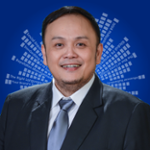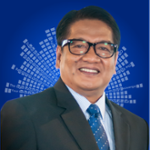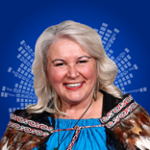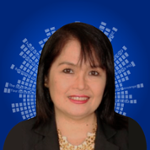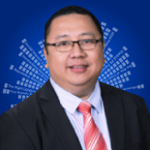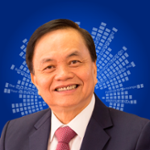- Opening Remarks
- Public Relations: The Global & Regional Perspective
John Kerr•Richard TsangTo understand where Philippine PR currently stands in the global stage, this session will zoom out and discuss the bigger picture of global and regional industry issues and developments. It will look into industry best practices globally and regionally, and try to see how these influence or will influence trends in Philippine PR.
- PR in the Philippines: Where We Are and Where We Should Go Next
Ron Jabal, APR•Bong Osorio, APRAt a time when technology is rapidly changing how people communicate, the way PR and brands interact with their consumers must also change. How true is this in the current PR landscape in the Philippines? This session takes off from the preceding one and will discuss current practices, developments, trends and even concerns or roadblocks in the Philippine PR industry. In covering local trends and practices, the speakers will amplify issues faced by local practitioners and trends likely to influence the current landscape.
- Global and Local State of PR Panel Discussion
John Kerr•Richard Tsang•Ron Jabal, APR•Bong Osorio, APR - How to Toe the Line: Global Outlook with Local Attitude
Marc HaGlobal Outlook. Local Attitude. Where do we draw the boundaries?
This session amplifies the balancing act many agencies face as they adopt international practices to up their PR game while growing their strengths as local practitioners. For agencies part of an international group, how do they define autonomy or is there a need for it? - Lunch Break
- Crisis Management: The Case of Christchurch
Fiona Cassidy, APR, LPRINZOften than not, crises are deemed the beginning of a brand's end. In almost all cases, crisis management is geared toward gatekeeping to prevent media pickups or digression to divert attention away from the real issue. What if there's a way to turn crisis into a social impact initiative?
This session will look at how a crisis can be turned into a good social movement. The case of the Christchurch terror attack and how the crisis was handled will give new insights on crisis management. - Pulse Check
- Competing for the Slice of Marketing Pie
Richard Bagnall•Kelvin Koh•Weldon Fung - Measuring the Impact of PR in the Age of Digital
Ben SoubiesAs the lines between traditional, digital and social media become increasingly blurred, determining the success of your PR efforts can even be more challenging, How can brands measure the impact of PR more effectively?
In this session, we will tackle the evolving role of PR in protecting your brand's reputation and deep dive into how you can leverage consumer insights to elevate the impact of your PR efforts. - PM snacks
- Breakout Session 1
Ritzi Ronquillo•RJ Rodillo•Andrew NichollsTHIS IS PR. THIS IS US.
There is more to the discipline and profession of Public Relations that remains unexplored and misunderstood. Its soul, purpose and practice are key elements that can make the difference in driving and supporting businesses, organizations, companies, institutions and advocacies to achieve in the midst of change and cyber technologies. It embraces diversity, integrates and enables, thrives and makes sense of disorder and vagueness, and finds focus, meaning and solutions in the midst of issues and crisis. The secret is in understanding what it truly is and what it can do for your organization, and how authentic practice of it can make a difference and be your unique brand.
SPEAK YOUR AUDIENCE LANGUAGE: IT'S CALLED CUSTOMER CENTRICITY
The need to devise different communication strategy for different audience demographics and psychographics is stronger now more than ever. The one size fits all approach doesn’t work in our industry anymore. There is no single communication framework that works for target audiences across boards. Specifically, what messages would resonate to B2B and B2C target audiences?
UNDERSCORED: DATA-DRIVEN PR CAMPAIGN
Conceptualizing a PR campaign is no easy task. Communication professionals are often faced by one big challenge: substantiating their proposed concept through well-defined data. This session aims to discuss the importance of a data-driven campaign and the best tools to use in gathering data. - Breakout Session 2
Paul Fedelicio•Doris Isubal-Mongaya•Ed Timbungco, APR, CPMEINFLUENCER MARKETING IN THE AGE OF AUTHENTICITY
Influencers rose mainly because they create nonsynthetic content. They are the Juans and Juanas, real people who share their experience with brands not because they are paid but because they want to share their story. But as these same influencers assume celebrity status because of their growing following base and brands engage them for their needs, is authenticity flying out the window? And with virtual marketing emerging, how can we be sure content remains authentic and the connection nonsynthetic?
CROSSING BORDERS: UNDERSTANDING PR PRACTICE AND TRENDS IN DIFFERENT REGIONS IN THE PHILIPPINES
Amplifying one reality today that PR practices differ among the different regions in the country -- within Metro Manila itself and between NCR and the regions outside it -- this session will look into the gaps, if any, and see where standard practices can be adopted. It will also discuss best practices from the different regions, providing practitioners insights on what communicators from other areas in the country do and what they can adopt for their own practice.
JOINED AT THE HIP: WHEN PR AND MARKETING SYNERGIZE
PR and marketing are different in objectives, approaches and target markets. Yet they share a common goal -- to build and nurture the relationship between an organization and its stakeholders -- and this is pursued as they complement each other in more ways than organizations and practitioners admit.
How else can PR and marketing sync? Do brands need to pursue only one or would aligning PR and marketing serve their needs better? How can practitioners ensure consistency between their PR strategies and marketing plans?
- Your Brand is in Motion • Is That a Good Thing?
Jeremy SeowBrands live in a world of constant motion. Economics, culture, competition, crises, regulation — every little moment affects how consumers see you. The bad news is: You don’t have control over any of it. So are you propelling your brand, or is someone or something else doing it for you? Or is it both? And what can you do about it?
This session sets out to understand this world of motion and how brands might harness that movement to navigate the complexities of disruption and dislocation, and win consumers’ love. - Pulse Check
- PR in the Age of Brand Activism: Are Brands and Organizations in the Philippines Ready?
Arun Sudhaman•Mark De JoyaGillette. Nike. Coke. These brands consciously and bravely dove into the center of politically charged conversations. In the Philippines, more Filipinos have become conscious consumers as seen in their active participation in social issues. Brands and organizations, however, are indifferent -- scared even -- to political correctness.
So we ask, what is holding back organizations in the Philippines from participating in social narratives? Are they consciously avoiding getting involved or are they only not aware enough? - Who is Shaping Public Perception? Brand. Media. Citizen Journalism
Joy Cabrillos•Manuel MogatoTechnology has transformed the dynamic of today's communication matrix. Whereas media and organizations used to monopolize the shaping of public perception, technology empowers audiences to originate authentic narratives that either debunk or support stories broadcast by mainstream media, giving rise to citizen journalism. In such landscape, how is public perception influenced?
- Lunch Break
- Anvil Awards Launch
- Brands and Women: Front-lining Gender Empowerment 'The Case of InLife SHEROES program'
Maria Noemi Azura - Battle of Data: Winning Communication in a Data-Driven World
Weldon FungNot too long ago, the world regarded oil as its most valuable resource. Until scrutiny following multiple environmental concerns raised from all fronts changed the landscape and the rise of technology giants fueled the emergence of another equally valuable resource: data. Now, data seems to be taking the same route with antitrust regulators challenging tech giants and prompting restrictions that affect data consumers.
This session looks into the need to use data correctly and effectively with regulations and sensitivities in mind. It will challenge attendees to revisit their own approach to data and see how else this commodity can be leveraged. - PM Snacks
- Breakout Session 1
Joey Gurango•Leah Huang•Prashant Saxena•Patricia MalayBUILDING CREDIBILITY FOR SMALL BUSINESS THROUGH TECHNOLOGY
Building a brand is no easy task. Every step an entrepreneur takes can either make or break the business. Defining what a brand stands for and the message it needs to convey to its stakeholders can be a challenge. But with the use of data, technology, and the right communication approach, small businesses can definitely make a dent in the market.
This session aims to equip entrepreneurs with the pillars of building the brand's message that can cut through the noise.
CORPORATE REPUTATION: TAKING THE DRIVER'S SEAT AND NOT LETTING IT SLIDE
In this session, we will cover:
1. Using AI + qualitative research to understand changing consumer behaviour in the category/industry and reacting quickly
2. Decoding emerging crisis at scale through video analytics
3. Communicating consistently with target consumers
BRIDGING THE GAP BETWEEN CONSUMER EXPECTATIONS AND BRAND STANCE
Amid the rise of wokeism and the rapidly changing business environment, organizations must be willing to listen, engage and act their stakeholders, or risk losing out to competitors who do. How should brands and organizations communicate with socially conscious target audiences? Are consumers defining--if not in control of or limiting--the communication path that organizations intend to take? Should organizations give in to consumers' expectations?
This session will tackle FleishmanHillard's Authenticity Gap report, which highlights the big issues that concern consumers and the ways companies can respond. - Breakout Session 2
Raul Castro•Monique Castro•Chito SobrepeñaWINNING THE WAR OF STORIES
Technology has fast-tracked the rise of the digitoral era, enabling brands to tell stories that reflect consumers' experiences or move audiences to care, act or take part in their cause. But at a time when all brands have seemingly become storytellers, how will your story stand out?
BUILDING THOUGHT LEADERSHIP IN THE AGE OF CONNECTED COMMUNICATION
The digital space has become a repository of information and has granted individuals easy access to data and claims of thought leadership. How do we identify a true industry expert from a pool of individuals who claim the same expertise?
THE FUTURE OF SOCIAL IMPACT COMMUNICATION
At a time when the public can be very suspicious about the real intent and motivations of brands' advocacy or social impact communication initiatives, how should communicators connect the brand to their communities better?
This session challenges PR practitioners to revisit their social investment campaigns to find where they can do better, particularly in the age of technology. It will look into how to measure the success of a campaign or program and assess its impact on the communities it is supposed to serve. - Kickoff: The 2019-2024 Philippine PR Roadmap


